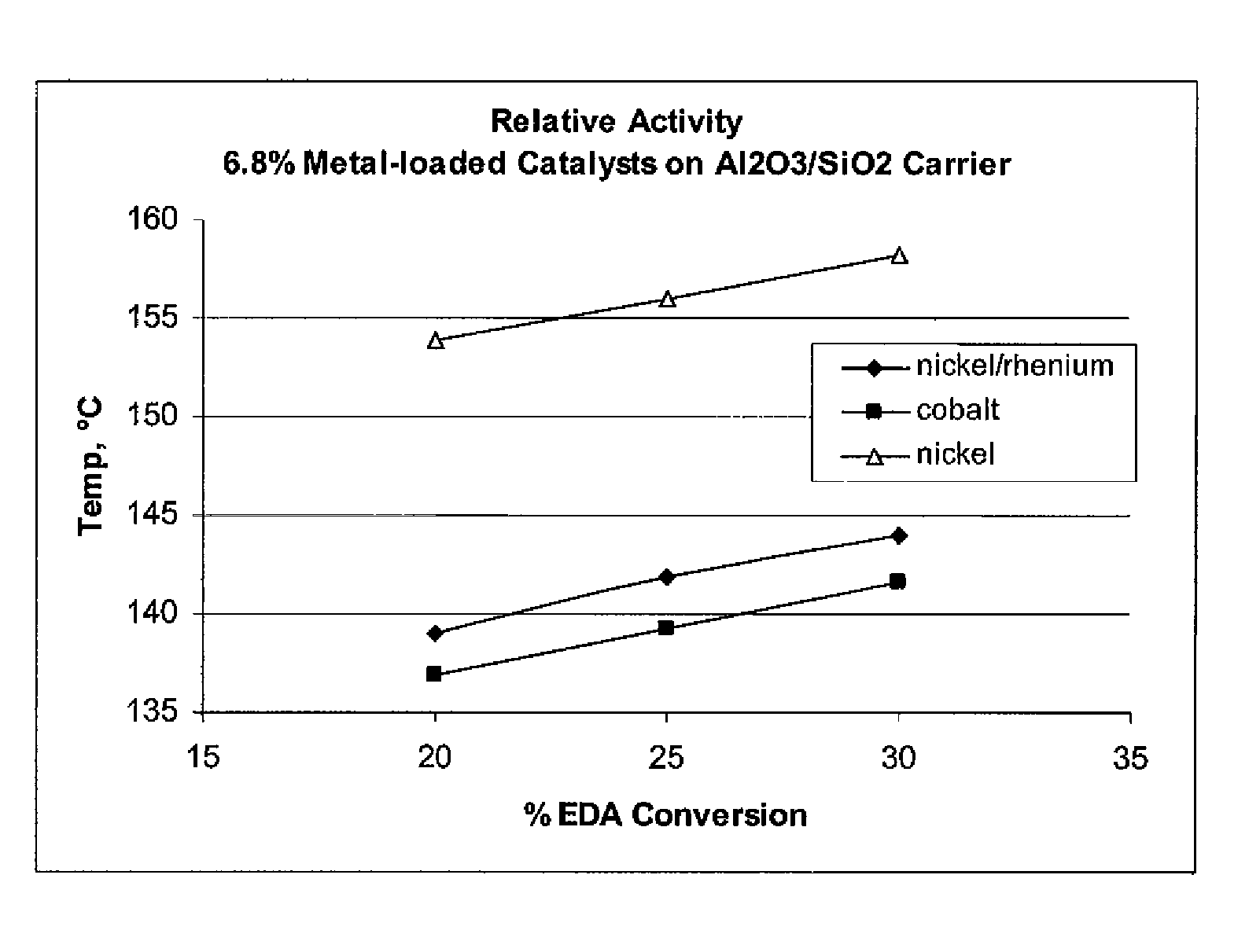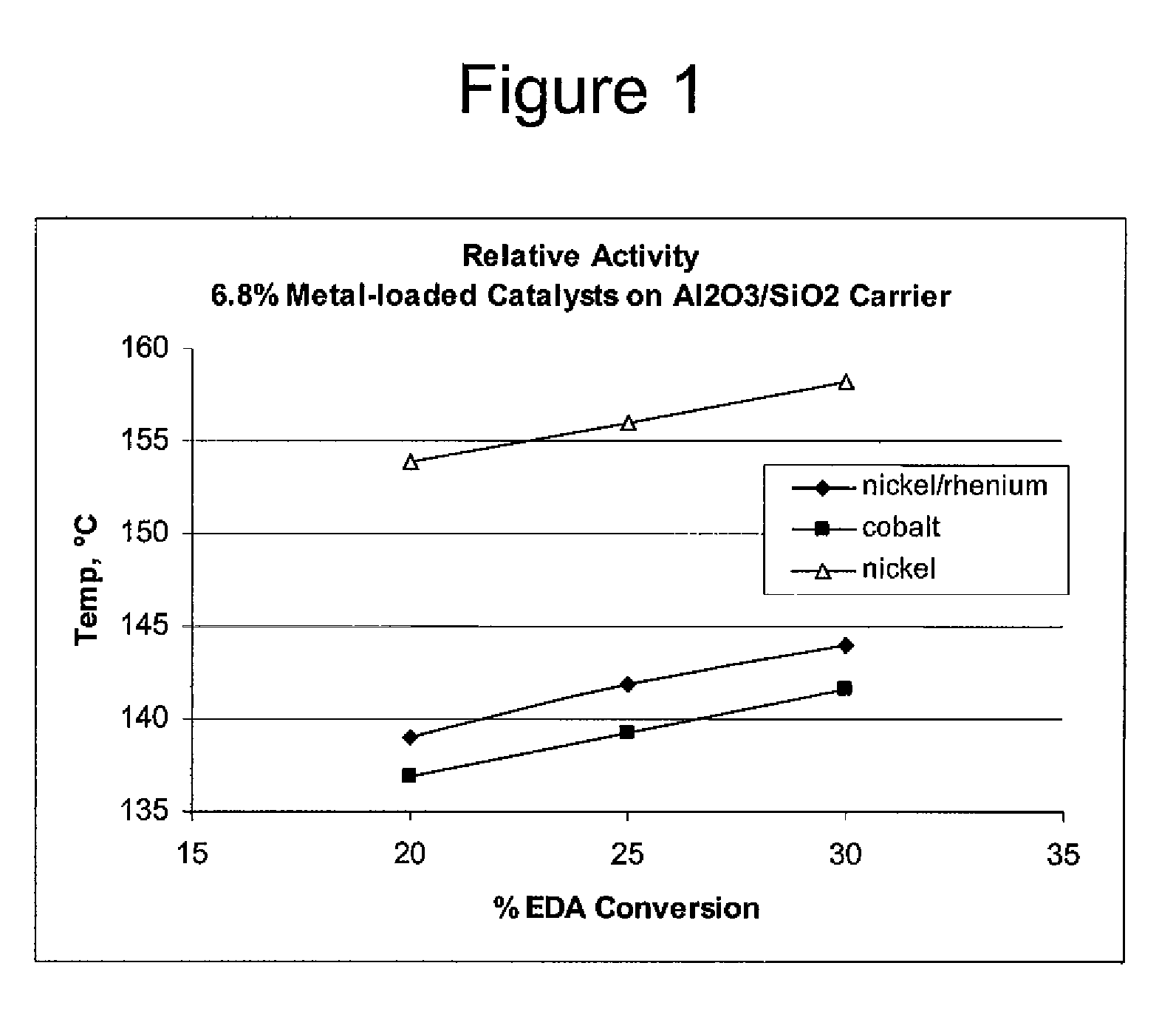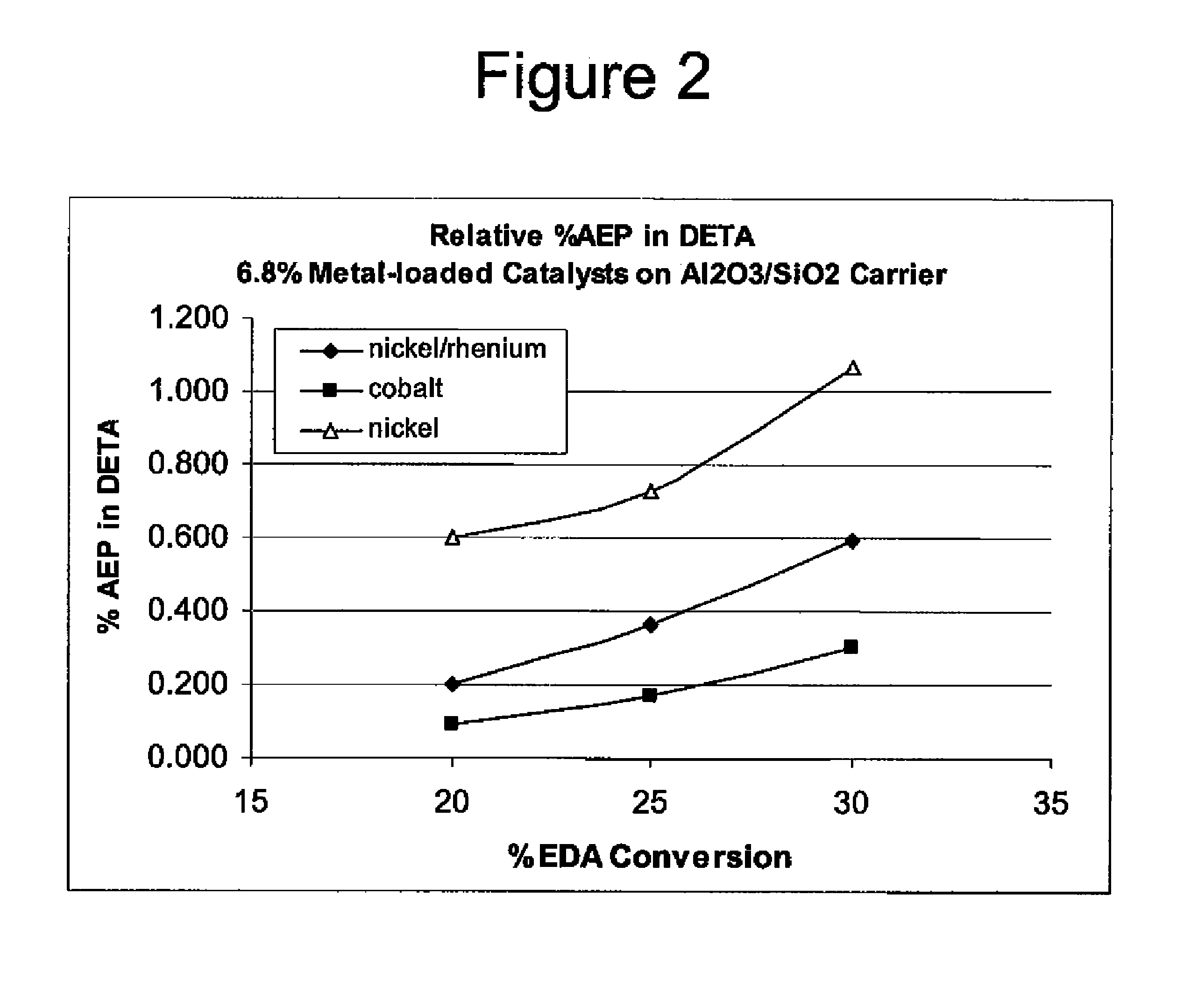Low metal loaded, alumina supported, catalyst compositions and amination process
a technology of alumina supported and catalyst compositions, applied in the direction of metal/metal-oxide/metal-hydroxide catalysts, physical/chemical process catalysts, other chemical processes, etc., can solve the problems of high pip production, high pip levels, and not typically provide high selectivity to deta, so as to minimize unwanted cyclic products and good selectivity
- Summary
- Abstract
- Description
- Claims
- Application Information
AI Technical Summary
Benefits of technology
Problems solved by technology
Method used
Image
Examples
example 1
Catalyst Preparation
[0114]Unless otherwise noted, low concentration metal loaded catalyst compositions were prepared using the following generalized procedure. Table 2 includes a list of catalyst compositions that were prepared, and Table 3 includes a list of commercially available supported catalysts that were used for comparative purposes.
[0115]Precursor salts of the metals (the nitrate salts of cobalt, nickel, and copper, unless noted in Table 2) were dissolved in 70-80° C. water to form an impregnation solution. The final volume of the impregnation solution was adjusted to equal the adsorption volume required for the number of times that the support was impregnated, and the quantities of the precursor salts were those calculated to give the metal compositions provided in the Examples. In each case the support was impregnated to incipient wetness by the addition of the appropriate amount of impregnation solution and gently agitated until all the liquid was adsorbed. The sample wa...
PUM
| Property | Measurement | Unit |
|---|---|---|
| wt. % | aaaaa | aaaaa |
| wt. % | aaaaa | aaaaa |
| wt. % | aaaaa | aaaaa |
Abstract
Description
Claims
Application Information
 Login to View More
Login to View More - R&D
- Intellectual Property
- Life Sciences
- Materials
- Tech Scout
- Unparalleled Data Quality
- Higher Quality Content
- 60% Fewer Hallucinations
Browse by: Latest US Patents, China's latest patents, Technical Efficacy Thesaurus, Application Domain, Technology Topic, Popular Technical Reports.
© 2025 PatSnap. All rights reserved.Legal|Privacy policy|Modern Slavery Act Transparency Statement|Sitemap|About US| Contact US: help@patsnap.com



